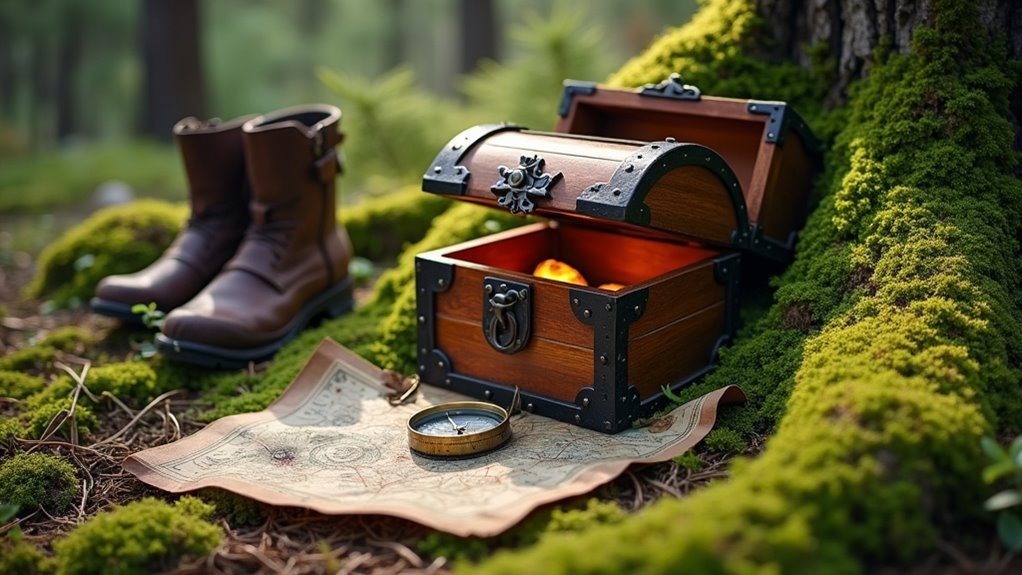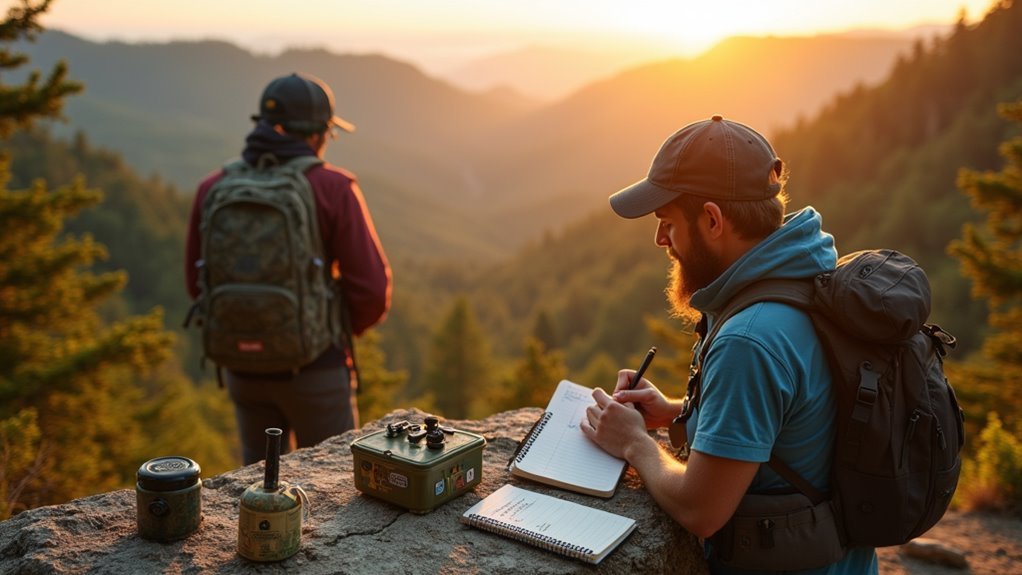Some of the links in this article may be affiliate links. If you make a purchase through these links, we may earn a small commission at no extra cost to you. Thank you.
While some geocachers focus entirely on the hunt, I’ve found that the story behind your hide often makes the difference between a forgettable find and a memorable adventure. I’ve seen lackluster caches with amazing descriptions get favorite points, while brilliant hides with minimal information sit unnoticed. Want to transform your container-in-a-bush into a destination worth seeking? The secret lies in how you craft your narrative – and I’m about to show you exactly what works.
The Essential Elements of a Compelling Geocache Description

Why do some geocaches attract dozens of visitors while others sit unnoticed for months?
In my experience, it’s all about the cache description you craft.
A compelling cache description is like a treasure map—it doesn’t just guide, it excites and entices.
A great cache isn’t just about the container—it’s about telling a story that makes seekers want to set out on your adventure.
I’ve found that the most visited caches include specific details about what seekers will experience.
Tell them why they should visit, what makes your location special, and maybe share what inspired you to place it there.
Don’t forget to mention any equipment they’ll need or challenges they might face.
You know what really helps?
Adding photos!
They break up text and give searchers a tantalizing glimpse of what awaits them.
Trust me, a well-crafted description can make all the difference.
Showcasing Your Location’s Story and Unique Appeal
Now let’s talk about what really makes a geocache irresistible—the story behind your chosen spot. When you’ve found an interesting spot, don’t just mark it and move on. I’ve learned that the best caches reveal why that location matters to you personally.
| Story Element | What to Include | Why It Works | Example |
|---|---|---|---|
| History | Local legends, events | Creates curiosity | “This boulder marked the boundary…” |
| Personal Connection | Your discovery story | Adds authenticity | “I stumbled upon this view while…” |
| Natural Features | Unique flora/fauna | Highlights exploration | “Watch for the rare butterflies…” |
| Surprises | Container gadgets, themes | Makes a good cache memorable | “The container includes a puzzle…” |
Crafting a Description That Balances Mystery and Information

How do you create a geocache description that leaves finders excited but not spoiled?
Well, I’ve found the sweet spot is teasing just enough to get cachers intrigued without revealing the “aha” moment.
On your cache page, mention what makes the location special—maybe it’s a breathtaking view or historical significance—but don’t give away the exact surprises they’ll discover.
I think it’s essential to include practical details like required equipment or terrain challenges.
Break your description into short paragraphs, maybe add a photo that hints without showing too much.
Most successful caches I’ve seen follow this formula: tell seekers why they should visit, but preserve that magical moment of discovery.
After all, isn’t that thrill why we all cache in the first place?
Enhancing Your Text With Visual Elements and Formatting
A good geocache description really comes alive when you add some visual punch to your words.
When placing a cache, I’ve found that strategic photos break up text walls and give seekers’ eyes a rest while actually conveying more information. Think about it—a picture of that tricky hiding spot might be worth 50 confusing words!
For your first geocache, try incorporating images that showcase the location’s unique appeal. Maybe there’s a gorgeous view or interesting historical marker nearby? Photos create emotional connection and help tell your cache’s story.
I think formatting matters just as much as pictures, though. Break your text into digestible paragraphs, use links to relevant resources, and maybe—well, I’m not sure everyone does this—add themed images that match your cache’s concept for extra personality.
Tailoring Descriptions for Different Cache Types and Difficulty Levels

Beyond visual elements, different cache types demand distinct description approaches. When you choose your cache type for your first hide, remember that traditional caches need simple, beginner-friendly descriptions under 500 characters – focus on local attractions and straightforward hints.
For mystery caches, I like to weave subtle puzzle clues into my descriptions. It’s kinda like giving them a taste of what’s to come! EarthCaches, on the other hand, should highlight geological education – that’s what seekers expect.
Multi-caches? Well, you’ll need to clearly outline each stage and terrain challenges.
And if you’re creating a high-difficulty cache, don’t forget specific warnings about physical demands.
I’ve found that matching your description’s complexity to your cache’s difficulty rating creates the most satisfying experience for finders.
Frequently Asked Questions
How to Write a Geocache Description?
I’ll capture attention with descriptive language about my location’s unique features and engaging hooks that make seekers curious. I’ll include necessary details while keeping it concise and visually appealing.
Is Geocaching Still a Thing in 2025?
Yes, geocaching is thriving in 2025! I’ve noticed a significant Community Revival, with millions of forum posts and Tech Integration enhancing the experience. Trackables remain popular, with active discussions happening daily.
What Are the Three Main Rules of Geocaching?
I’d say the three main rules are: register all caches officially, avoid placing caches on private property (common Rule Violations), and camouflage effectively. These Historical Rules maintain integrity in our geocaching community.
How to Hide a Good Geocache?
I’ve found creative hide spots and durable container options are key. I always seek permission, maintain proper distance from other caches, and make sure my coordinates are precise for seekers.